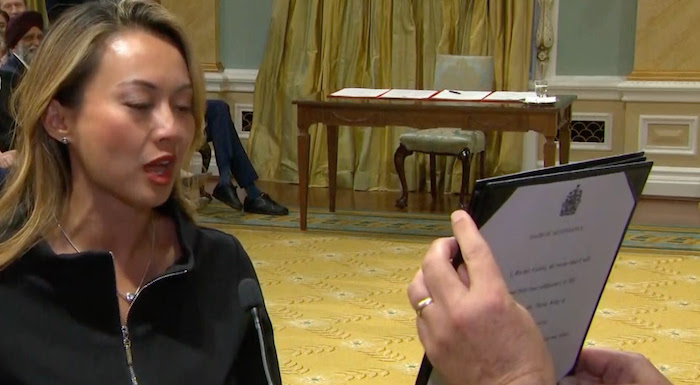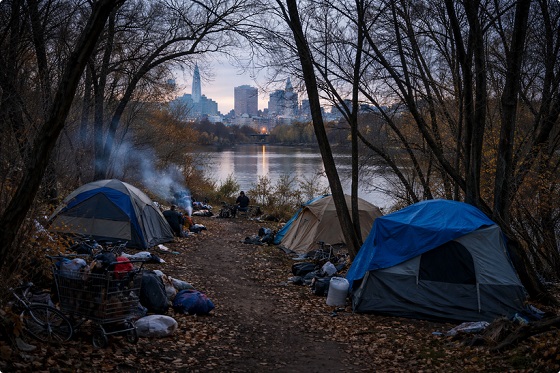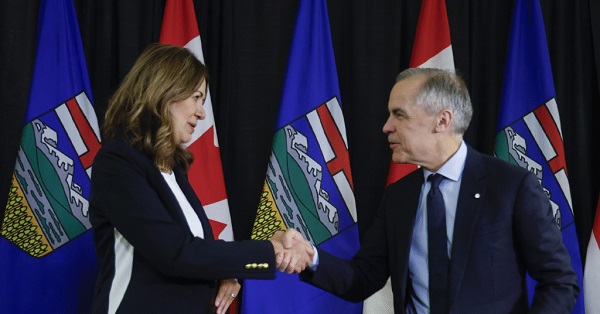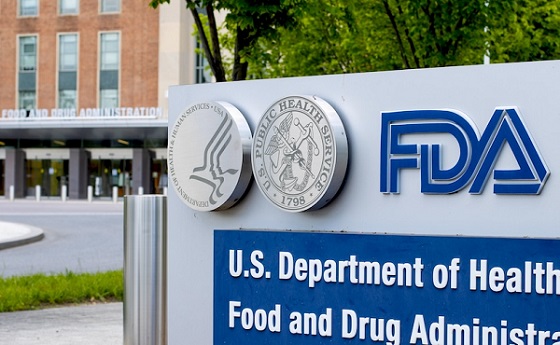National
Paul Wells on PM Trudeau’s cabinet shake up

Rechie Valdez teared up a bit taking her oath. It was nice.
Posted with permission from Substack author Paul Wells
The army you have
Exciting new combinations of Liberals and syllables
I skipped almost the entire cabinet-shuffle business on Wednesday. I think I’ve mostly managed to avoid getting jaded in this job, but there are days, boy howdy. Welcome, Minister Blah Blah Blah to the crucial office of Provision, Preparedness, Children and Popular Song. Congratulations, hug your kids. Next.
Then here was Rechie Valdez’s voice catching as she took the oaths (one for entry into the Council of the Elders and the other to join the Resonant Circle of the One, or whatever) and for just a minute, boredom took a holiday. The people who do these jobs should be emotional about them. Optimism is a good thing. Small businesses are definitely on the list of things worth caring about. Go get ’em, minister.
Paul Wells is a reader-supported publication. To receive new posts and support my work, consider becoming a free or paid subscriber.
A foolish consistency is the hobgoblin of days like this. During the 2021 campaign, when things were going badly, the official line out of the Trudeau brain trust was that the prime minister “doesn’t do shakeups.” And yet here’s one now. What’s changed?
There are always two ready answers to such a question. For one, the world has changed, as it always does. Previous shuffles addressed the astonishing 2016 votes for Brexit and Trump, and the less epochal but still significant election of Doug Ford as Ontario premier in 2018. In late 2021, when Trudeau was randomly firing one of the most experienced ministers in his cabinet, it might still have been possible to believe the PM’s third term in office wouldn’t be dominated by Russia, China, and the knock-on effects from a sharp increase in immigration. The misplaced optimism of that bygone era 20 months ago can no longer be maintained.
Second, the electoral context has changed. “We have all the time in the world before the next election” has become “We sure don’t,” and the readers who get cross when I link to horse-race polls are going to hate clicking on this.
I guess this shuffle is designed to address the Poilievre threat? Kind of? Listlessly? A year ago Trudeau was already getting advice to make sharp, noticeable changes in his team, message and style. (Yes, I just linked to myself.) Today he put Sean Fraser in charge of Housing and Marc Miller in charge of Immigration. Those might be the two most encouraging moves among dozens, both for Liberals who hope “good communicators” won’t turn out to be a sad joke, and for citizens who hope strong administrators might, even if only occasionally, be put in charge of challenging files.
The rest of the day’s news is puzzling. Seamus O’Regan to Labour? I thought the boss liked him. Pablo Rodriguez to Transport would seem to be yet another case of ministerial burnout on all those Web Giant-Killer bills that have become the torment of a succession of Heritage ministers. Pascale St.-Onge replaces him on the censorship ‘n’ subsidies beat, ringing a new variation on the eternal question: Why do they call it Canadian Heritage if only ministers from Quebec are allowed to do the job?
Gary Anandasangaree at Crown-Indigenous Relations and Arif Virani as Minister of Justice and Attorney-General are two cases of rookie ministers promoted to tough jobs. I’ve heard good things about both of them. Both have relevant committee and parliamentary-secretary experience. Virani was Jody Wilson-Raybould’s parliamentary secretary; she seems not to have kept many fond memories. (In her memoir she calls him one of the “talking heads” who were sent out “to make comments that evidence has now shown were not accurate or right.” In general, Trudeau, a non-lawyer mostly counselled by non-lawyers, seems to be chronically unsure why he should have a justice minister or what they are good for.)
Freeland, Guilbeault, Champagne and Joly remain in their previous jobs, evidence of their clout. On the other hand, I maintain that Rodriguez’s being shuffled was evidence of his clout. By now it’s clear that Freeland writes her own rules: she does the work she wants to do, to varying degrees of success, and nobody in this government can make her do anything else. Her fate is bound up with the prime minister’s. Probably neither of them expected it, but the stability of the tandem is now part of Trudeauworld’s game physics.
Cabinet shuffles defy confident prediction, or should. Will Jean-Yves Duclos make a difference as Public Services and Procurement Minister? He should. He’s a detail man in a detail job. But ministers are rarely better than they are permitted to be by circumstances and by the circle around the PM. Duclos will shine if this government wants to buy stuff, and not if it doesn’t.
That 2021 bit of campaign spin wasn’t entirely false. In some ways this prime minister really doesn’t do shakeups. He keeps his chief of staff, his indispensable deputy, his own way of thinking and talking about his government. Everything else swirls around. He came to office promising real change. Increasingly what’s real is what doesn’t change.
Paul Wells is a reader-supported publication. To receive new posts and support my work, consider becoming a free or paid subscriber.
Invite your friends and earn rewards
Frontier Centre for Public Policy
Tent Cities Were Rare Five Years Ago. Now They’re Everywhere

From the Frontier Centre for Public Policy
Canada’s homelessness crisis has intensified dramatically, with about 60,000 people homeless this Christmas and chronic homelessness becoming entrenched as shelters overflow and encampments spread. Policy failures in immigration, housing, monetary policy, shelters, harm reduction, and Indigenous governance have driven the crisis. Only reversing these policies can meaningfully address it.
Encampments that were meant to be temporary have become a permanent feature in our communities
As Canadians settle in for the holiday season, 60,000 people across this country will spend Christmas night in a tent, a doorway, or a shelter bed intended to be temporary. Some will have been there for months, perhaps years. The number has quadrupled in six years.
In October 2024, enumerators in 74 Canadian communities conducted the most comprehensive count of homelessness this country has attempted. They found 17,088 people sleeping without shelter on a single autumn night, and 4,982 of them living in encampments. The count excluded Quebec entirely. The real number is certainly higher.
In Ontario alone, homelessness increased 51 per cent between 2016 and 2024. Chronic homelessness has tripled. For the first time, more than half of all homelessness in that province is chronic. People are no longer moving through the system. They are becoming permanent fixtures within it.
Toronto’s homeless population more than doubled between April 2021 and October 2024, from 7,300 to 15,418. Tents now appear in places that were never seen a decade ago. The city has 9,594 people using its shelter system on any given night, yet 158 are turned away each evening because no beds are available.
Calgary recorded 436 homeless deaths in 2023, nearly double the previous year. The Ontario report projects that without significant policy changes, between 165,000 and 294,000 people could experience homelessness annually in that province alone by 2035.
The federal government announced in September 2024 that it would allocate $250 million over two years to address encampments. Ontario received $88 million for ten municipalities. The Association of Municipalities of Ontario calculated that ending chronic homelessness in their province would require $11 billion over ten years. The federal contribution represents less than one per cent of what is needed.
Yet the same federal government found $50 billion for automotive subsidies and battery plants. They borrow tonnes of money to help foreign car manufacturers with EVs, while tens of thousands are homeless. But money alone does not solve problems. Pouring billions into a bureaucratic system that has failed spectacularly without addressing the policies that created the crisis would be useless.
Five years ago, tent cities were virtually unknown in most Canadian communities. Recent policy choices fuelled it, and different choices can help unmake it.
Start with immigration policy. The federal government increased annual targets to over 500,000 without ensuring housing capacity existed. Between 2021 and 2024, refugees and asylum seekers experiencing chronic homelessness increased by 475 per cent. These are people invited to Canada under federal policy, then abandoned to municipal shelter systems already at capacity.
Then there is monetary policy. Pandemic spending drove inflation, which made housing unaffordable. Housing supply remains constrained by policy. Development charges, zoning restrictions, and approval processes spanning years prevent construction at the required scale. Municipal governments layer fees onto new developments, making projects uneconomical.
Shelter policy itself has become counterproductive. The average shelter stay increased from 39 days in 2015 to 56 days in 2022. There are no time limits, no requirements, no expectations. Meanwhile, restrictive rules around curfews, visitors, and pets drive 85 per cent of homeless people to avoid shelters entirely, preferring tents to institutional control.
The expansion of harm reduction programs has substituted enabling for treatment. Safe supply initiatives provide drugs to addicts without requiring participation in recovery programs. Sixty-one per cent cite substance use issues, yet the policy response is to make drug use safer rather than to make sobriety achievable. Treatment programs with accountability would serve dignity far better than an endless supply of free drugs.
Indigenous people account for 44.6 per cent of those experiencing chronic homelessness in Northern Ontario despite comprising less than three per cent of the general population. This overrepresentation is exacerbated by policies that fail to recognize Indigenous governance and self-determination as essential. Billions allocated to Indigenous communities are never scrutinized.
The question Canadians might ask this winter is whether charity can substitute for competent policy. The answer is empirically clear: it cannot. What is required before any meaningful solutions is a reversal of the policies that broke it.
Marco Navarro-Genie is vice-president of research at the Frontier Centre for Public Policy and co-author with Barry Cooper of Canada’s COVID: The Story of a Pandemic Moral Panic (2023).
Fraser Institute
How to talk about housing at the holiday dinner table

From the Fraser Institute
The holidays are a time when families reconnect and share cherished traditions, hearty meals and, occasionally, heated debates. This year, housing policy might be a touchy subject at the holiday dinner table. Homebuilding has not kept pace with housing demand in Canada, causing a sharp decline in affordability. Efforts to accelerate homebuilding are also changing neighbourhoods, sometimes in ways that concern residents. Add in a generational divide in how Canadians have experienced the housing market, and it’s easy to see how friends and family can end up talking past one another on housing issues.
Some disagreement about housing policy is inevitable. But in the spirit of the holidays, we can keep the conversation charitable and productive by grounding it in shared facts, respecting one another’s housing choices, and acknowledging the trade-offs of neighbourhood change.
One way to avoid needless conflict is to start with a shared factual baseline about just how unaffordable housing is today—and how that compares to the past.
The reality is that today’s housing affordability challenges are severe, but not entirely unprecedented. Over the past decade, prices for typical homes have grown faster than ordinary families’ after-tax incomes in nearly every major city. At the pandemic-era peak, the mortgage burden for a typical purchase was the worst since the early 1980s. The housing market has cooled in some cities since then, but not enough to bring affordability back to pre-pandemic levels—when affordability was already strained.
These facts provide some useful context for the holiday dinner table. Today’s aspiring homebuyers aren’t wrong to notice how hard it has become to enter the market, and earlier generations aren’t exaggerating when they recall the shock of double-digit interest rates. Housing affordability crises have happened in the past, but they are not the norm. Living through a housing crisis is not, and should not be, a generational rite of passage. Canada has had long periods of relative housing affordability—that’s what we should all want to work towards.
Even when we agree on the facts about affordability, conflicts can flare up when we judge one another’s housing choices. Casual remarks like “Who would want to live in a shoebox like that?” or “Why would anyone pay that much for so little?” or “Why are you still renting at your age?” may be well-intentioned but they ignore the constraints and trade-offs that shape where and how people live.
A small townhome with no yard might seem unappealing to someone who already owns a single-detached house, but for a first-time homebuyer who prioritizes living closer to work or childcare, it might be the best option they can afford.
At first glance, a new condo or townhome might look “overpriced” compared with nearby older single-family homes that offer more space. But buyers must budget for the full cost of ownership, including heating bills, maintenance and renovations, which can make the financial math on some “overpriced” new homes pencil out.
And renting isn’t necessarily a sign that someone is falling behind. Many renters are intentionally keeping their options open: to pursue job opportunities in other cities, to sort out their romantic lives before committing to homeownership, or to invest their money outside of real estate.
This isn’t just a dinner-table issue. The belief that “no one wants to live like that” leads some to support policies restricting apartments, townhomes or purpose-built rentals on the premise that they’re inherently undesirable. A better approach is to set fair rules and let builders respond to what Canadian families choose for themselves—not what we think they should want.
The hardest housing conversations are about where new homes should go, and who gets a say as neighbourhoods change.
It’s natural for homeowners to feel uneasy about how their neighbourhoods might change as a consequence of housing redevelopment. But aspiring homebuyers are also right to be frustrated when local restrictions prevent the kinds of homes Canadian families want from being built in the places they want to live. The economics is clear—allowing more housing styles to be built in more places means greater options and lower prices for renters and homebuyers.
There’s no simple way to balance the competing views of existing residents and aspiring homebuyers. But the conversation becomes more productive if both sides recognize an unavoidable trade-off—resistance to neighbourhood change reliably restricts housing options and makes housing less affordable, but redevelopment can entail real downsides for existing residents.
Everyone wants better housing outcomes for Canadian families, but we won’t get them by talking past one another. If we bring empathy to the table and stay clear eyed about the trade-offs, we’ll collectively make better housing policy decisions—and have calmer holiday dinners.
-

 Energy1 day ago
Energy1 day agoThe Top News Stories That Shaped Canadian Energy in 2025 and Will Continue to Shape Canadian Energy in 2026
-

 Business2 days ago
Business2 days agoSome Of The Wackiest Things Featured In Rand Paul’s New Report Alleging $1,639,135,969,608 In Gov’t Waste
-

 International1 day ago
International1 day ago$2.6 million raised for man who wrestled shotgun from Bondi Beach terrorist
-

 Alberta1 day ago
Alberta1 day agoOttawa-Alberta agreement may produce oligopoly in the oilsands
-

 Frontier Centre for Public Policy10 hours ago
Frontier Centre for Public Policy10 hours agoTent Cities Were Rare Five Years Ago. Now They’re Everywhere
-

 Energy2 days ago
Energy2 days ago‘The electric story is over’
-

 Energy1 day ago
Energy1 day agoWestern Canada’s supply chain for Santa Claus
-

 Opinion11 hours ago
Opinion11 hours agoPope Leo XIV’s Christmas night homily




